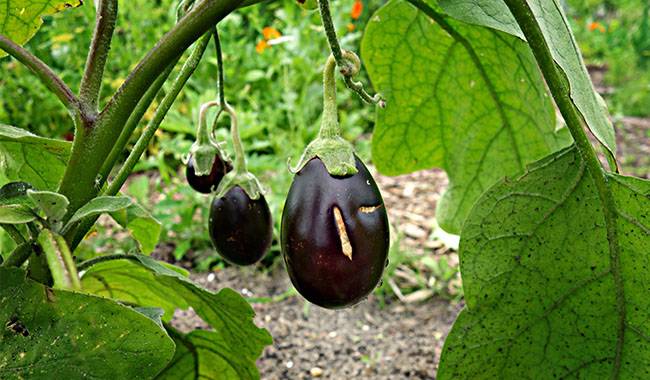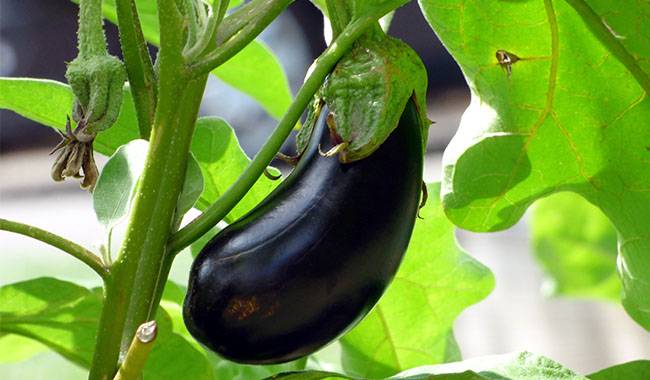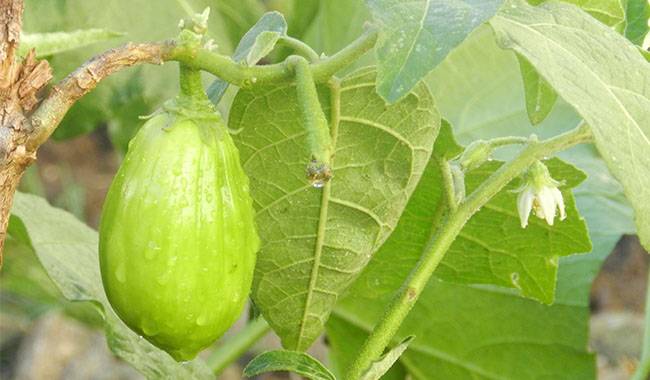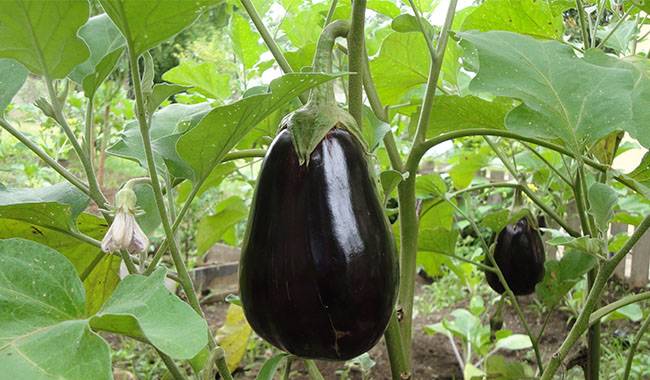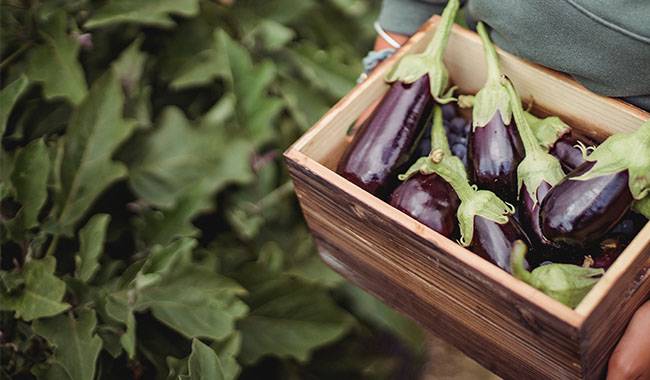
How to plant eggplant outdoors? I believe many of you will mention it.
We highly recommend you to read “Eggplant is a vegetable that can makes your life more longer“.
Eggplant requires plenty of sunshine, but the sunshine time is short, the average temperature is warm but not weak, and the water is sufficient, but it does not need to irrigate the root system.
A long time ago, eggplants could only be grown in protected areas, and then artificially created the conditions required for this cultivation.
With the development of breeding, not only can eggplant be grown on the farm, but now it will also be possible to grow eggplant in the open field.
Prepare the eggplant raised bed
The best predecessors of eggplant are early cabbage, beans, cucumbers, carrots, various onions, melons, zucchini, and beans.
After nightshades (tomatoes, potatoes), it is impossible (due to the same pests and diseases) to grow eggplants.
Breeding needs to be temporarily isolated, that is, the original planting area is not earlier than 3-4-5 years.
Sandy loam is best for eggplant growth. If the continuous application of fresh manure, gravel, sand, humus, wood chips, or other substances increases the permeability of soil air and water, the culture will grow on dense soil.
Eggplants require a well-lit area in crop rotation. It is forbidden to cover tall crops or vegetables on the trellises (cucumbers, beans).
The harvested eggplant will absorb a lot of nutrients from the field, so the soil used for the crop is completely filled with organic and mineral fertilizers.
For top dressing in autumn, please use the green fertilizer planted in autumn and subsequent planting, or plant it on 1 square foot. An area of 6-10 kilograms of humus, mature compost. Add 200-250 grams of wood ash and 50-60 grams of nitro phosphate.
Spring plowing for eggplant.
If the plot does not have time to fertilize in autumn due to environmental reasons, eggplants can be planted in the future eggplant beds in spring.
Or instead of applying green manure, apply humus, and add mineral fertilizer at the same dosage as the autumn fertilizer.
When to grow eggplant outdoors
Growing eggplant seedlings in open fields in the south will not cause difficulties. By mid-to-late May, the soil containing the root layer will heat up to 60°F-70°F, and the air temperature will be within 65°F-75°F, creating the best conditions for eggplant seedlings.
Eggplant seedlings can emerge within 65-70 days. By this period, their root system will be very developed, with 5-8 developed leaves and 1-2 buds.
In areas with mild climates, other measures are needed to prepare beds for growing eggplant seedlings. If the soil is cold, use plenty of soil to raise the bed 30-40 cm.
In autumn, it is recommended to put semi-rotted turf and other materials in the garden bed, which will increase soil temperature after decomposition.
Planting in the open field in early June, sometimes later. It can be used for planting (unlike other vegetables) with a seedling age of 70-80 days and at least 3-7 developed leaves.
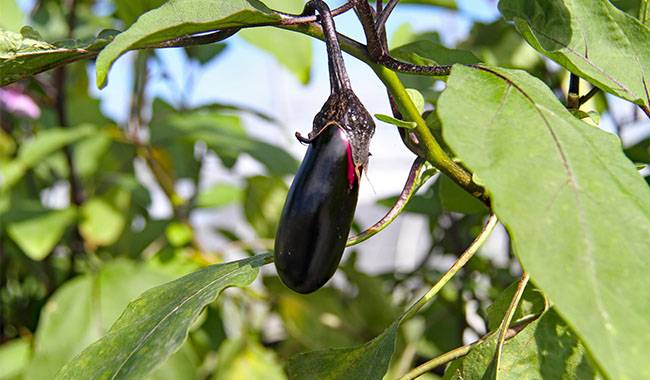
How to grow eggplant seedlings?
In order to prevent the plants from blocking each other, it is more practical to adopt row planting schemes. According to the habits of future shrubs, a row of seedlings will be placed every 45-60 cm, and a row of seedlings will be placed every 60-80 cm between rows.
In the 10-18 cm deep hole, in order not to damage the delicate and fragile roots of the eggplant, plant a piece of moist soil on the seedlings. The root in the hole cannot be broken.
Put the eggplant seedlings in the holes in the soil, it is easy to knead (without effort).
Then use warm water (65℉-80℉) to water, you can dilute with a potassium permanganate solution.
Watered eggplant seedlings should be covered with any fine dry mulch (surface peat, 2-3 years of non-pine sawdust, humus, etc.).
Outdoor eggplant care
Sunlight
Eggplant likes bright sunlight. In the first month, its duration should not exceed 12 hours, and in the subsequent 12-14, it should not exceed 12 hours.
During the 12 hours of the day, the eggplant will quickly transition to a flowering and fruiting state.
During longer days, they may be restricted to growing as vegetative plants without flowering and fruit set.
Therefore, you should always be prepared to cover materials to restrict Sunlight from entering this crop.
Temperature conditions
Eggplant has very high requirements on the temperature system of soil and air.
The soil should be at least 60°F, and its optimal temperature range is 65°F-70°F.
The air temperature should reach 65°F-75°F during the day and 60°F-65°F at night.
Long-term rain has an adverse effect on the development of eggplant. Lowering the air temperature to 50°F during flowering will cause the discharge of flowers and ovary, and the further reduction will cause the culture to die.
The way to prevent this is to use hot water for irrigation and temporary shelters.
Watering
Irrigation is always carried out under sunlight heating. In areas with a mild climate and cold soil, the maximum heating temperature of irrigation water is 80°F-90°F. The eggplant is watered only at the root.
When water hits the surface of the leaves, the leaves will become sick, photosynthesis will decrease, and plants will stop growing.
The first watering is done 10-12 days after planting in the open field. If the weather is dry and hot, it takes 7-9 days.
The soil should always be kept moist, but not more than 65-70% (eggplant roots are not waterlogging and the soil moisture is high).
From the flowering period and ovarian formation, increase the irrigation rate by immersing the soil in 15-20 cm of the layer, and water once a week (5-7 days later).
Topdressing
During the plant protection period, root feeding of eggplants is carried out once every 2-3 weeks. During flowering and ovary formation between them.
In addition, the plants are treated by spraying boric acid, a series of trace elements, and other solutions for foliar spraying.
The first feeding of the eggplant is carried out 10-12 days after the open field planting (reference point: new leaves appear on the formed flower bud).
In view of the very slow growth of eggplant plants in the first month, use a nitrogen-containing fertilizer to fertilize 30-40 grams with 10 liters of water (1.0-1.5 liters per eggplant).
If these fertilizers are not available, it can be formulated into an ammonia solution at a ratio of 150 grams of fertilizer per 10 liters of water.
After 12-15 days, the eggplant is fertilized for the second time with a wood ash mixture, which can supplement the trace elements in the root layer, and complete fertilizer (nitro phosphate or ammonium nitrate), 20-25 grams per tree or 40 per square meter -50 grams.
In the second fertilization, you can add an extract of bird droppings instead of the proposed mixture.
Soak 2-3 kg of poultry manure in 10 liters of water for 2-3 days, filter and dilute with 10-15 warming water, and irrigate the roots of each tree at a rate of 1.0-1.5 liters.
Effectively fertilize the eggplants in the open field during the flowering stage, using nitrophosphorus, diamine phosphate, or nitrophosphorus card 35-40 g/m2 area and spraying the foliage with boric acid spray (1 g dissolved in 5 liters of heat) Water, spray plants after cooling).
During the flowering and fruiting stages, trace elements or fermented herbal solutions can be repeatedly used for foliar spraying.
As the eggplants begin to firm, 40-50 grams of the phosphorus-potassium mixture (superphosphate and potassium sulfate) is used per square meter.
Eggplant can be harvested multiple times. In order to maintain the fruit (especially on the marginal soil), after the first or second harvest, you can use phosphorus and potassium fertilizer to re-fertilize.
Now the fertilizer market provides a wide variety of nutrients, which can maintain and increase soil fertility, thereby providing nutrients for vegetable crops (compound fertilizer, compound fertilizer, organic minerals, etc.).
In any case, during the second half of the growing season, there is no need to over-fertilize eggplants by applying large doses of fertilizers, especially nitrogen fertilizers. Plants will form a large amount of biomass, which is not conducive to fruit development.
Weeding
The soil under the eggplant should always be loose and moist, free of crusts and weeds. Loosen the root system the next day after watering, so as not to damage the root system, but it is best to tilt (tilt) on the soil
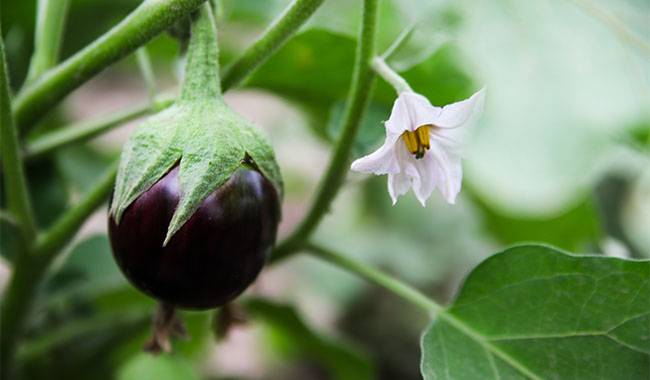
Eggplant trimming
Eggplant does not like an unnecessary intervention. Therefore, low-growing and dwarf varieties do not require shrub structure. The clumps are formed when they reach 25-30 cm.
Late eggplant formation (removing the large stems with the ovary) can severely damage the bush, cause bush disease, and sometimes even death.
Check the bearing (center) shank. Pinch off the stems in the leaf axils until you reach the first bud.
If the plant is stunted, the first bud can also be removed. This method promotes the development of root systems and stems and has a positive effect on flower formation and ligation.
Furthermore, the method of forming eggplant clusters is also different.
The early low-growing eggplant varieties have small fruit quality (200-250 grams) and have 2-5 stems. Generally, they are not structured and only treated appropriately.
If the eggplant variety is early or mid-ripening and forms many ovaries, the fruit is characterized by medium weight (up to 250-400 grams), regardless of the growing area, up to 20-25% of the flowers can be cut.
The remaining flowers form larger fruits. If all the flowers are gone, the fruit will be small, and many of them will be underdeveloped.
The eggplant clusters with vigorous growth, many branches, and large body are usually formed by middle and late varieties and are mainly planted in the south.
Such bushes are formed with 1-3 stems, and scaffolds are tied in multiple places to prevent large fruits (weight up to 450-900 grams) from breaking.
Leave 1 branch on the twigs of each branch, and remove the rest by pruning (it is best to cut them neatly with scissors).
With this formation, there will be 5-8 fruits per cluster, weighing 1 kg. Eggplant stems grow slowly, so check it every 2 weeks.
In autumn, trim the tops of the eggplant bushes and remove all small fruits. They will not grow again, but they will draw back some nutrients.
Protect eggplants from pests and diseases
Eggplant is an over-harvest crop. When the eggplant fruit reaches the standard size, color, pulp density (determined by pressing the fruit), and other characteristics, it is technically matured and removed.
But before harvesting, eggplants will be attacked by pests and diseases throughout the growing season.
In the case of multiple picking, chemical protective agents are prohibited.
Therefore, preventive measures and the use of biological agents are the basis of protection. Biological agents can be used from the first few days after planting in the field until harvest.
Eggplant is a delicacy for pests. With the establishment of warm weather, the activity of eggplant increases sharply.
They can damage leaves, flowers, ovaries, and fruits. The most harmful are aphids, whiteflies, red spiders, thrips, etc.
If the requirements of agricultural technology are violated, the plants are often harmed by fungal and bacterial rot and viral mottling.
And in this case, proper biological agents are used for conservation. Biological complex preparations effectively protect plants.
In addition to biological products, you can also use folk methods to protect plants from pests and diseases.
So how long does it take to grow eggplant?
Recommend you to read “How long does it take to grow eggplant“.
Remember! Biological agents are effective at a certain temperature and meet all requirements for dilution, preparation of canned mixtures, and treatment of plants.
Violating the recommendations (especially increasing the concentration of the solution, handling in cold weather, etc.) will not produce the expected results.




